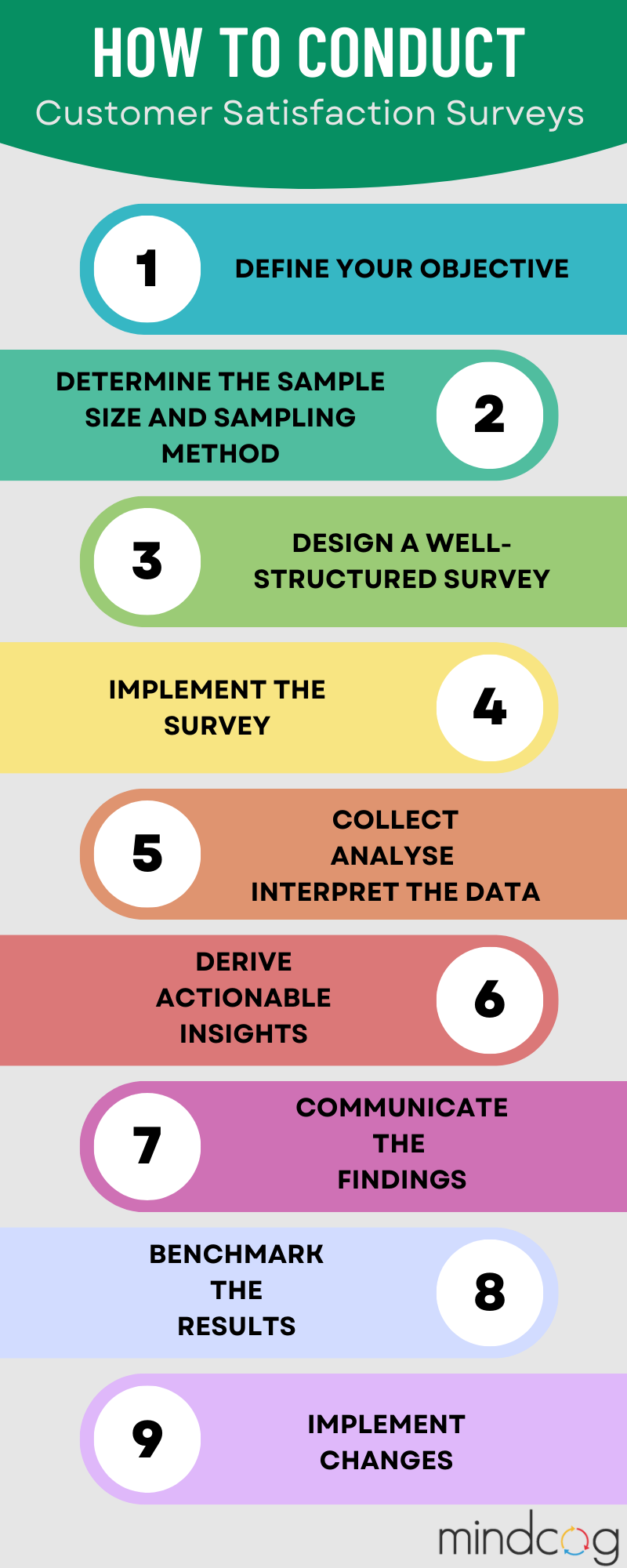Understanding and fulfilling customer needs and preferences is paramount to success. Conducting customer satisfaction surveys through market research provides invaluable insights that drive business growth and customer loyalty. One of the most effective tools for gaining insights into customer satisfaction is through well-designed customer satisfaction surveys.
This article will guide you through the process of conducting customer satisfaction surveys, helping you unlock valuable insights to enhance your products, services, and overall customer experience.

- Define Your Objectives: Before diving into the survey design, it’s crucial to clearly define your objectives. What specific areas or aspects of your business are you seeking feedback on? Are you targeting overall customer satisfaction, customer service, or other areas?Establishing clear objectives will guide the entire survey process and ensure you collect relevant data.
- Determine the Sample Size and Sampling Method: Choosing the right sample size and sampling method is crucial for obtaining statistically significant results. Decide on the appropriate sample size for your survey. This will depend on factors such as the size of your customer base, available resources. Larger samples generally provide more reliable results, but smaller samples can still yield valuable insights if properly selected and representative of your target audience. Consider using random sampling techniques to ensure a representative sample of your target customer base. Online survey platforms and customer databases can be valuable resources for accessing your target audience.
- Design a Well-Structured Survey: Crafting a well-structured survey is vital to gather accurate and actionable insights.
Consider the following tips:
-
- Keep it concise: Avoid survey fatigue by keeping the survey brief and focused on key areas of interest.
- Use clear language: Make sure questions are easy to understand and avoid technical terms.
- Include a mix of question types: Utilise a combination of multiple-choice, rating scales, and open-ended questions to gather both quantitative and qualitative data.
- Use skip logic: Customise the survey experience by routing respondents to relevant questions based on their previous responses.
- Survey flow: Ensure the survey flow is logical and easy to follow, keeping it engaging for respondents.
- Test your survey: Before launch, test the survey with a small group to ensure clarity, flow, and validity.
- Implement the Survey: Once you have designed your survey and identified your sample, it’s time to implement the survey. Surveys can be implemented through various channels such as email, social media, website pop-ups, or mobile apps to reach your customers. Provide clear instructions and a compelling reason to participate to maximise response rates. Implement reminders and follow-ups to increase participation.
- Collect, Analyse and Interpret the Data: After collecting the survey responses, it’s time to analyse the data to uncover valuable insights. Start by cleaning and organising the data, ensuring accuracy and completeness. Consider using data analysis software or tools that can streamline the process and provide insights in real-time. Explore quantitative measures such as customer satisfaction scores. Also, dive into qualitative responses to uncover valuable feedback, suggestions, and areas for improvement.
- Derive Actionable Insights: Once you have analysed the data, it’s time to derive actionable insights. To identify areas of strength and those that require attention, look for patterns, trends, and correlations in the data. Find ways to raise consumer satisfaction, increase the features of your products, streamline your services, or hone your marketing tactics.
- Communicate the findings: Share the findings and insights derived from the survey with relevant stakeholders across your organisation. Collaborate with teams responsible for product development, customer service, marketing, and operations to develop action plans based on the feedback received.
- Benchmark the results: Benchmarking results helps the organisations to improve customer loyalty and satisfaction. Customer satisfaction survey results can be compared with local competitors, best companies, Industry peers and with your own company’s previous survey results. It provides the scope for further improvement.
- Implement Changes: Prioritise the issues that require immediate attention and develop action plans to address them. Involve relevant stakeholders to ensure a collaborative approach to implementing changes. Customer satisfaction is an ongoing process, and it’s important to continuously monitor and measure progress. Conduct regular follow-up surveys to track changes in satisfaction levels over time and assess the effectiveness of implemented improvements. Use the feedback loop to show customers that their opinions are valued and to increase loyalty and satisfaction.
Customer satisfaction surveys through market research are a powerful tool for businesses seeking to enhance customer experience and drive growth. By following these steps, you can conduct effective customer satisfaction surveys that provide actionable insights to drive business growth and customer-centric decision-making.
Remember, customer satisfaction is an ongoing journey, and regular feedback and improvement efforts will help you stay ahead in today’s competitive marketplace.

